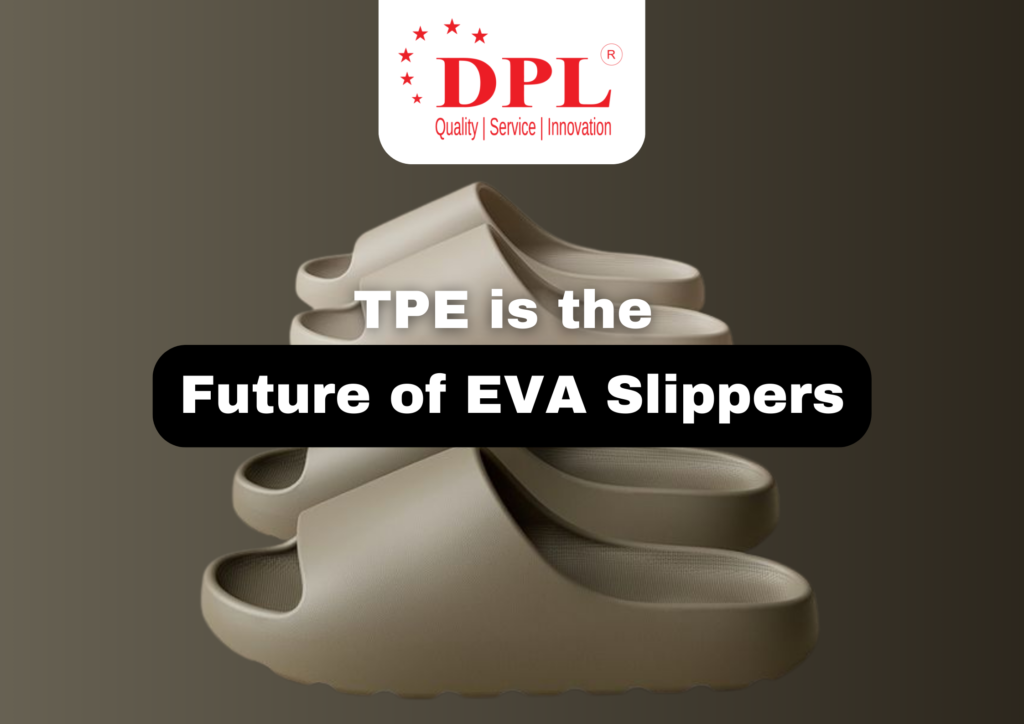
Did you know that the global market for thermoplastic elastomers (TPE) is projected to reach $31.8 billion by 2026? As a manufacturer in the footwear industry, this statistic speaks volumes about the shifting trends in material preference, especially when it comes to slippers. While EVA (ethylene-vinyl acetate) has been a popular choice for years, it’s clear that TPE is emerging as the superior alternative for creating lightweight, durable, and eco-friendly footwear.
If you’re looking for ways to enhance the performance, comfort, and sustainability of your slippers, TPE may be the game-changer you’ve been searching for. Let’s explore why TPE is set to replace EVA as the go-to material for footwear soles.
Why EVA Slippers Are Becoming Outdated
For many years, EVA has been the standard material for slippers due to its lightweight nature and cost-effectiveness. However, despite its popularity, EVA has several limitations that can impact the overall quality of the final product:
Durability Issues
EVA tends to compress over time, losing its cushioning ability, which results in less comfort and support. For consumers who wear their slippers daily, this means their footwear becomes less effective much faster than they would like.
Environmental Concerns
EVA is petroleum-based and non-biodegradable, meaning that once the product reaches the end of its life, it contributes to landfill waste. As sustainability becomes a top concern for both consumers and manufacturers, materials like EVA are being phased out in favour of eco-friendly alternatives.
This is where TPE shines, offering significant advantages over EVA, both in terms of product performance and environmental impact.
What Makes TPE the Future of Slippers?
TPE, or thermoplastic elastomer, is a material that blends the benefits of plastic and rubber. It’s not just a color or texture upgrade from EVA—it’s an improvement in almost every aspect of slipper manufacturing. Here’s why TPE is a better choice for the future of slippers:
Improved Durability
TPE is highly resistant to wear and tear, which means your slippers will last longer. If you’ve faced consumer complaints about soles wearing out too quickly or losing their shape, TPE offers a much-needed solution by maintaining its structural integrity over time.
Superior Comfort
Unlike EVA, which tends to flatten out after repeated use, TPE retains its elasticity and cushioning. For your customers, this translates to a more comfortable slipper that feels as supportive on day 100 as it did on day one.
Eco-Friendly Production
With environmental concerns at the forefront, manufacturers are turning to materials that reduce their carbon footprint. TPE is recyclable, making it a more sustainable choice for the footwear industry. Additionally, its production process is energy-efficient, which allows you to meet your sustainability goals without compromising on product quality.
Enhanced Performance Across All Conditions
One of the biggest pain points with EVA slippers is their tendency to underperform in certain conditions. EVA can become stiff in cold temperatures and may lose traction when exposed to wet surfaces. TPE, however, addresses these issues and offers superior performance in various environments:
- Cold and Heat Resistance: TPE retains its flexibility in both hot and cold temperatures, making it a reliable material for all-season footwear. Whether consumers are wearing slippers in the comfort of their home or taking a walk outdoors, TPE ensures the slippers maintain their comfort and performance.
- Better Grip and Traction: TPE also offers improved slip resistance compared to EVA. This makes it ideal for slippers designed for bathroom use, poolside wear, or outdoor activities. The added safety and grip will make your products more appealing to customers who prioritize both comfort and functionality.
Customization Opportunities with TPE
One of the additional benefits of working with TPE is its flexibility in terms of customization. As a manufacturer, you know how important it is to offer differentiated products that stand out in the marketplace. TPE can be easily molded into a variety of designs, allowing you to create slippers that not only perform well but also offer unique styles and features.
Additionally, TPE can be produced in a range of hardness levels, giving you the ability to tailor the material’s softness or firmness based on the type of slipper you’re creating—whether it’s for indoor use, athletic wear, or casual footwear.
Cost Efficiency for Manufacturers
Switching from EVA to TPE doesn’t just improve your product—it can also enhance your manufacturing efficiency. TPE is more processable than EVA, allowing for faster production times and less waste. Its recyclability further adds to the cost benefits, as you can reuse leftover materials and reduce overall production costs.
Moreover, because TPE products are more durable, customers will experience longer-lasting slippers, which enhances customer satisfaction and reduces the frequency of returns or complaints.
Final Thoughts
In an increasingly competitive market, it’s crucial to stay ahead of trends that improve both product quality and sustainability. TPE is leading the way as a revolutionary material that addresses the limitations of EVA, offering manufacturers a better option for creating lightweight, durable, and eco-friendly footwear.
As consumer expectations evolve, the demand for high-performing and environmentally responsible products will only continue to grow. By adopting TPE for your slippers, you’re not only meeting these demands but also positioning your brand as a forward-thinking leader in the footwear industry.
With TPE, you can produce slippers that provide superior comfort, durability, and environmental benefits, making it the material of choice for the future of footwear.
